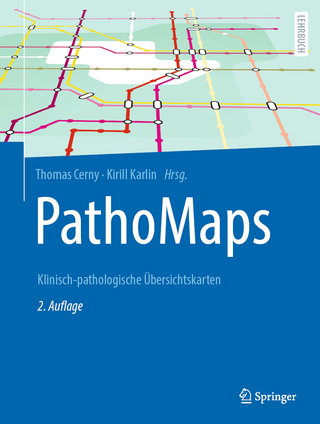
Human Evoked Potentials
Springer-Verlag New York Inc.
978-1-4684-3485-9 (ISBN)
Auditory, Somatosensory and Visual Evoked Potentials in the Diagnosis of Neuropathology: Recording Considerations and Normative Data.- Adaptation Effects in the Transient Visual Evoked Potential.- Linguistic Meaning-Related Differences in ERP Scalp Topography.- Application of Somatosensory Event Related Potentials to Experimental Pain and the Pharmacology of Analgesia.- Hemispheric Differences in Evoked Potentials to Relevant and Irrelevant Visual Stimuli.- A System Transfer Function for Visual Evoked Potentials.- Somatosensory Evoked Potentials in Man: Maturation, Cognitive Parameters and Clinical Uses in Neurological Disorders.- Event Related Potential Investigations in Children at High Risk for Schizophrenia.- Late Positive Component (LPC) and CNV During Processing of Linguistic Information.- The Macular and Paramacular Subcomponents of the Pattern Evoked Response.- The Effects of Methylphenidate Dosage on the Visual Event Related Potential of Hyperactive Children.- Evoked Potential Indicants of Size- and Orientation-Specific Information Processing: Feature-Specific Sensory Channels and Attention.- Maturation and Task Specificity of Cortical Potentials Associated with visual Scanning.- Multichannel Mapping of Spatial Distributions of Scalp Potential Fields Evoked by Checkerboard Reversal to Different Retinal Areas.- Spontaneous and Evoked Cerebral Electrical Activity and Localization of Language Function in Children with Minimal Cerebral Dysfunction.- Hemisphere Differences in Event Related Potentials and CNVs Associated with Monaural Stimuli and Lateralized Motor Responses.- Different Variants of Endogenous Negative Brain Potentials in Performance Situations: A Review and Classification.- Event Related Potentials in Language and Non-Language Tasks in Patients with Alexia without Agraphia.- Spatial and Temporal Distribution of Olfactory Evoked Potentials and Techniques Involved in Their Measurement.- Event Related Scalp Potentials During a Bimanual Choice R. T. Task: Topography and Interhemispheric Relations.- A Trial by Trial Study of the Visual Omission Response in Reaction Time Situations.- Event Related Potential Research in Psychiatry.- Spatial Distributions of Sensory Evoked Potentials in Psychiatric Disorders.- Contrast Evoked Potentials and Psychophysics in Multiple Sclerosis Patients.- Event Related Potentials in Development, Aging and Dementia.- Event Related Potential Assessment of Sensory and Cognitive Deficits in the Mentally Retarded.- Anatomical and Physiological Origins of Auditory Brain Stem Responses (ABR).- Color Evoked Potentials: Cortical and Subcortical Elements.- Abstracts.- Interactions Between Target and Masking Stimuli: Perceptual and Event Related Potential Effects.- Cerebral Organization of Event Related Potentials Analyzed by Multidimensional Scaling Techniques.- Electrophysiological Indicators of Cognitive Deficits in Chronic Alcoholics and Geriatric Subjects.- GSR, AEP and CNV in Depressed Patients and Healthy Controls.- Scalp-Recorded Visual Evoked Subcortical Potentials in Man.- Efficacy of the Scalp-Recorded Visually Evoked Potential in Demonstrating Misrouting of Optic Projections in Man.- Event Related Brain Potentials in Response to Conscious and Non-Concious Stimuli: Hemispheric Specialization and the Effects of Attention.- Clinical Use of the ABR in an Infant Intensive Care Unit.- The Evoked Potential as a Measure of Brain Dysfunction:.- Aging, Down’s Syndrome, Alcoholoism, Amytrophic Lateral Sclerosis and Renal Disease.- A New Test of Brain Function: Brain Stem Transmission Time (BTT).-Equivocation in Prediction Versus No-Prediction Schedules: Effects on ERSP Measures.- The Utility of ERPs in Determining Age-Related Differences.- Application of ERPs in the Study of Drug Use and Abuse in Man: A Close Look with More Sensitive Tasks and Measurement Techniques.- Auditory Evoked Potentials and Psychophysical Parameters in Circadian Studies.- Effects of Methylphenidate on Hyperactive Children’s Evoked Responses During Passive and Active Attention.- Evoked Potentials in Senile Dementia.- Electrophysiological and Biochemical Studies in Autistic Children Treated with Vitamin B6.- Visual Event Related Potentials of Pilots and Navigators.- Effects of Slow Cortical Potentials on Reaction Time.- Effect of Sound Pressure Direction and Frequency Spectrum of Clicks on Brain Stem Responses in Children.- Relations Between Contingent Negative Variation and Behavior Under Psychoactive Drugs in Man.- Evoked Potential Abnormality and Disability in Brain Damaged Patients: A Replication Study and Preliminary Findings in Relation to Outcome.- Electrocortical Manifestations of Complementary Hemispheric Specialization in an Expectancy Task.- The Effects of Optical Blur and Grating Adaptation on Amplitude and Phase of Evoked Potentials.- Operant Evoked Potential Conditioning in Animal and Man.- Visual Evoked Potentials During Stimulus Discrimination Learning.- The Utilization of Evoked Potentials in Psychopharmacology and Pharmacopsychiatry.- Discriminate Function Models of ERP Data in Hyperactive Children.- Auditory Evoked Potentials as Probes of Lateralized Information Processing in Adults and Infants.- Auditory Evoked Potentials Indicate Attentive Dysfunctions in Hyperkinetic Adolescents.- Diminished CNV Rebound and Perseverative Attention Set in Older Subjects.- LateComponents of the Auditory Evoked Response in Schizophrenics.- HAAR Transforms of Event Related Potentials: Toward an Optimal Re-Expression of the Data.- Developmental Changes in ERP Preceding Movement: Relation to Variability and IQ.- Evoked Potentials in the Differential Diagnosis of Sensory and Neurologic Impairment in Children.- Contributor Index.- Author Index.
| Reihe/Serie | III Human Factors | Nato Conference Series ; 9 |
|---|---|
| Zusatzinfo | XIV, 498 p. |
| Verlagsort | New York, NY |
| Sprache | englisch |
| Maße | 170 x 244 mm |
| Themenwelt | Medizin / Pharmazie ► Medizinische Fachgebiete ► Neurologie |
| Studium ► 2. Studienabschnitt (Klinik) ► Pathologie | |
| ISBN-10 | 1-4684-3485-3 / 1468434853 |
| ISBN-13 | 978-1-4684-3485-9 / 9781468434859 |
| Zustand | Neuware |
| Haben Sie eine Frage zum Produkt? |
aus dem Bereich


